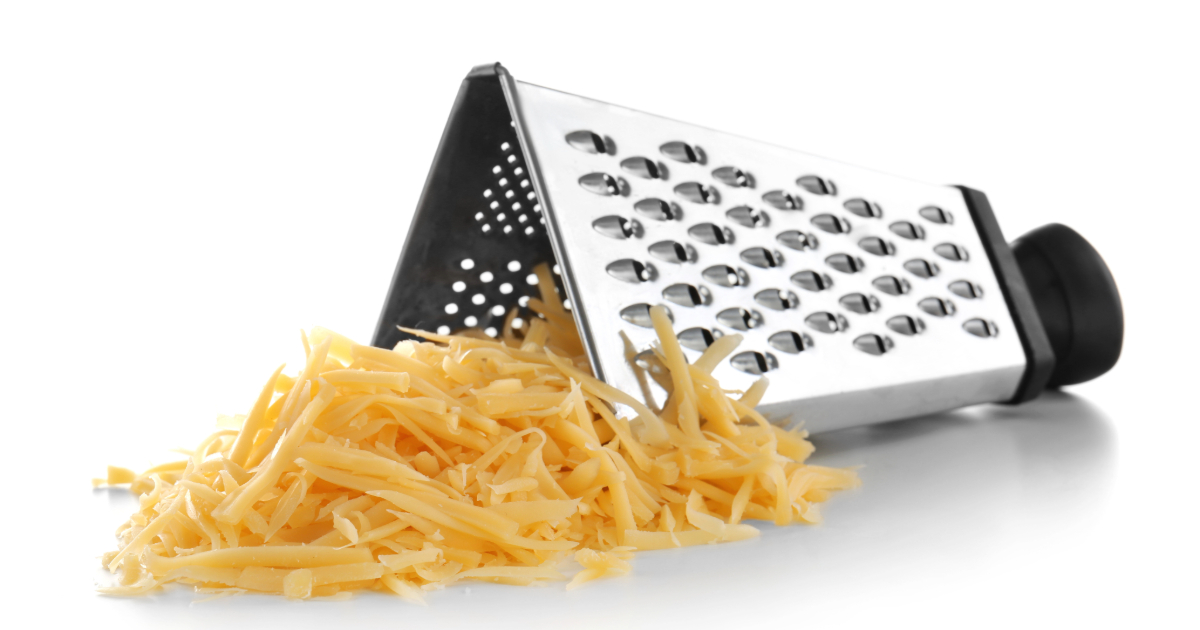When prepping ingredients in the kitchen, you may come across recipes calling for grated or zested ingredients.

But what exactly is the difference between using a cheese grater versus a zester? Both tools shred foods, but they actually serve quite different purposes.
What is a Cheese Grater?
A cheese grater is a versatile kitchen tool with large holes and sharp edges for shredding fruits, vegetables, cheeses, and more. The most common type is a box grater with four sides - each with holes of different sizes. This allows you to shred ingredients to various textures.
Cheese graters can process:
- Hard and soft cheeses
- Vegetables like carrots, potatoes, zucchini
- Spices such as nutmeg and cinnamon
- Chocolate for dessert toppings
- Butter for baking
Graters produce irregular, coarse shreds that add visual appeal to dishes. They also excel at shredding larger quantities efficiently.
Key Takeaway: Cheese graters have large holes to shred hard foods quickly into coarse, visually appealing shreds.
What is a Zester?
A zester is a tool made specifically for grating citrus fruit peels and other delicate ingredients. The holes are much smaller than on a grater. This allows you to finely grate just the flavorful outer peel without bitter pith.
Common zester uses include:
- Zesting citrus fruits
- Grating ginger, garlic, nutmeg
- Shaving hard cheeses like parmesan
- Garnishing dishes
The fine shreds moderate flavor instead of overwhelming the dish. Zesters provide more control for small tasks.
Key Takeaway: Zesters have tiny holes that finely grate outer peel to moderate flavor when garnishing.
Grater vs. Zester Comparison
| Feature | Cheese Grater | Zester |
|---|---|---|
| Main purpose | Shredding fruits, vegetables, cheeses into strands | Removing thin outer peel from citrus and spices |
| Hole size | Large | Small |
| Results | Coarse, irregular shreds | Fine, delicate shreds |
| Quantity produced | Large amounts | Small amounts |
| Uses | Hash browns, carrot salads, topping casseroles | Garnishing dishes, moderating spice flavor |
Key Takeaway: Graters shred large quantities quickly while zesters finely grate to moderate flavor.
Cheese Grater Advantages Over a Zester
While both tools shred ingredients, cheese graters offer a few key advantages:
More versatility
Graters can shred firm fruits and vegetables that would damage a zester. Their various hole sizes also suit more applications. You can shred both soft mozzarella and hard parmesan on a box grater.
Larger shred size
When you want long shreds for dishes like coleslaw or carrot salad, only a grater will work. Zesters specifically create tiny, delicate strands.
Visually appealing
The coarse, messy shreds from a grater add intrigue and texture to casseroles, salads, and bakes. Uniform zest doesn't provide the same appeal.
Zester Advantages Over a Cheese Grater
On the other hand, zesters also boast benefits:
Finer grate size
Zesters allow you to finely grate ginger, whole nutmeg, chocolate, and citrus peel. You have more precision and control.
Better flavor control
The small amount of shredded peel flavors dishes without overwhelming them. Too much lemon zest from a grater would overpower the other ingredients.
More affordable
While prices vary, most zesters cost just $4-$15 while quality cheese graters run $15-$30. Zesters provide value for small prep tasks.
Using Both in the Kitchen
You can absolutely have both graters and zesters in your kitchen since they fulfill different roles. Keep these tips in mind:
- Use graters for larger shredding tasks
- Use zesters when you want delicate garnishing
- Don’t shred firm veggies and fruits with a zester
Having both tools allows you to tackle a wider variety of recipes and prepping tasks!
FAQs
Can I shred chocolate with a grater or zester?
Yes! Both tools can finely or coarsely grate chocolate for baking, desserts, and candy making. The irregular shreds also add visual flair.
What’s the best cheese grater for soft cheeses like mozzarella?
Box graters offer sides with smaller holes that work well for soft cheeses without damaging them. Some flat handheld graters also have smaller grating holes. Avoid zesters for soft cheese shredding.
Why do my fingers keep getting cut on my grater?
Take extra caution as you grate since the holes and blades are very sharp. Switch to a grater with a protective finger guard for added safety. An ergonomic rubber grip also makes controlling the grater easier.
Can I use my zester on nuts and chocolate?
Yes, a zester will finely grate whole nuts and chocolate bars into flavorful crumbs, perfect for sprucing up sweets and breads. Just be careful not to apply too much pressure and damage the holes.
Conclusion
Cheese graters and zesters serve unique purposes when it comes to prepping and shredding foods in the kitchen.
Graters are great at tackling large shredding tasks while zesters are ideal for delicate garnishing.

